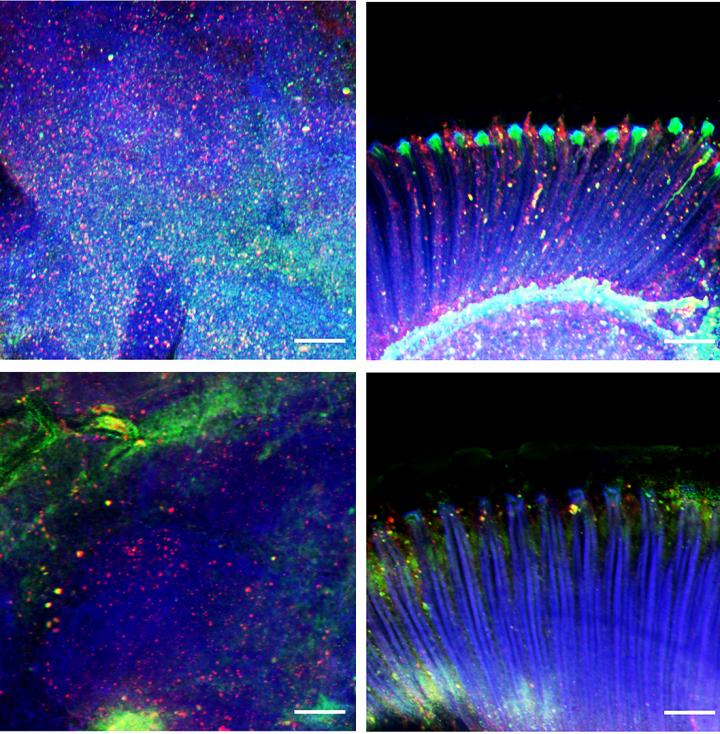Signals from muscle protect from dementia

Research in the lab of Fabio Demontis, PhD, of Developmental Neurobiology, used immunostaining and confocal microscopy on fruit fly brain and retina cells to show that Amyrel reduces the accumulation of protein aggregates seen in red and yellow.
Credit: St. Jude Children's Research Hospital
Scientists at St. Jude are studying how signals sent from skeletal muscle affect the brain.
How do different parts of the body communicate? Scientists at St. Jude are studying how signals sent from skeletal muscle affect the brain.
The team studied fruit flies and cutting-edge brain cell models called organoids. They focused on the signals muscles send when stressed. The researchers found that stress signals rely on an enzyme called Amyrel amylase and its product, the disaccharide maltose.
The scientists showed that mimicking the stress signals can protect the brain and retina from aging. The signals work by preventing the buildup of misfolded protein aggregates. Findings suggest that tailoring this signaling may potentially help combat neurodegenerative conditions like age-related dementia and Alzheimer’s disease.
“We found that a stress response induced in muscle could impact not only the muscle but also promote protein quality control in distant tissues like the brain and retina,” said Fabio Demontis, PhD, of St. Jude Developmental Neurobiology. “This stress response was actually protecting those tissues during aging.”
###
Cell Metabolism published a report on this work.
All latest news from the category: Life Sciences and Chemistry
Articles and reports from the Life Sciences and chemistry area deal with applied and basic research into modern biology, chemistry and human medicine.
Valuable information can be found on a range of life sciences fields including bacteriology, biochemistry, bionics, bioinformatics, biophysics, biotechnology, genetics, geobotany, human biology, marine biology, microbiology, molecular biology, cellular biology, zoology, bioinorganic chemistry, microchemistry and environmental chemistry.
Newest articles

Pinpointing hydrogen isotopes in titanium hydride nanofilms
Although it is the smallest and lightest atom, hydrogen can have a big impact by infiltrating other materials and affecting their properties, such as superconductivity and metal-insulator-transitions. Now, researchers from…

A new way of entangling light and sound
For a wide variety of emerging quantum technologies, such as secure quantum communications and quantum computing, quantum entanglement is a prerequisite. Scientists at the Max-Planck-Institute for the Science of Light…

Telescope for NASA’s Roman Mission complete, delivered to Goddard
NASA’s Nancy Grace Roman Space Telescope is one giant step closer to unlocking the mysteries of the universe. The mission has now received its final major delivery: the Optical Telescope…



